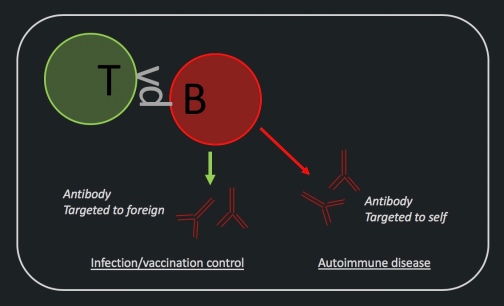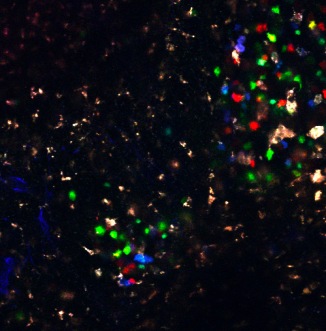This website will be updated in the upcoming weeks to better represent my current research focus and highlight the start of my research group in experimental immunology!!
T cell development, regulation, and plasticity,
and their role in generating protective immunity (in early life).
On this website, you can find news & updates about m y current research projects (incl. talks, publications, etc.), the translation of these findings to the public, and how I engage in improving my skill set and those of others. In addition, you can find all my prior research projects, publications, conference talks, positions, and more.
y current research projects (incl. talks, publications, etc.), the translation of these findings to the public, and how I engage in improving my skill set and those of others. In addition, you can find all my prior research projects, publications, conference talks, positions, and more.
Feel free to subscribe to receive a notification as soon as updates are posted.
Research focus
The current concept of a relatively homogeneous and quiescent naïve T cell population is in desperate need of revision (ref.), as recent insights have shown great diversity in both phenotype and function within the naïve T cell compartment. This new understanding has a major impact on current thinking and experimentation, including but not limited to homeostasis, reconstitution, immunotherapy, and aging, in the field of naïve T cell immunology.
How this heterogeneity of naive T cells contributes to providing protective immunity towards infection, autoreactivity, and malignancy is unknown. In the cases of infection and autoimmune disease, the generation of (auto-) antibodies by B cells is of great importance. How T cell-dependent B cell activation is altered and how it can be utilized as therapeutic targets in the light of new-found naive T cell heterogeneity is to be determined.
My research addresses conceptual and mechanistic immunological questions in (early life) T cell immunology with a strong translational aspect, utilizing murine models and studying human health and disease. More details about my research can be found here.
Current research projects:
- How, where, and when do B cells lose tolerance and acquire different self-reactivities (epitope spreading)?
- Does the Germinal Center (GC) response differ between the different initiators?
- How does successful immune therapy with a microbiome-derived peptide alter the T cell landscape in rheumatoid arthritis patients?
- How is naive T cell development, regulation, and plasticity altered in health, aging and chronic inflammation?
Utilizing state of the art techniques:
Confocal microscopy, multi-photon intravital microscopy, single-cell RNA sequencing (10X), Flow Cytometry, and Cell sorting, with (customized) functional assays, among others.

Confocal image of a whole murine spleen that highlights the Germinal Center (blue, GL7) within a follicle characterized by marginal zone macrophages (green, CD169), extra-follicular located plasma cells (white, CD138).
10X zoom, stitched image (~100 tiles)
.
.


2-photon microscopy image of 1 section through a lymph node.
.
.
.
.
Left: a portion of cells in the Germinal Center got a different color at the start of the experiment. Colors are by endogenous fluorescence via Confetti reporter
Right: 2 germinal centers (red & green) seen at a later time-point (~several days-weeks). Similar color means ‘clonal expansion’ of those cells.
(white/yellow, auto-fluorescence)